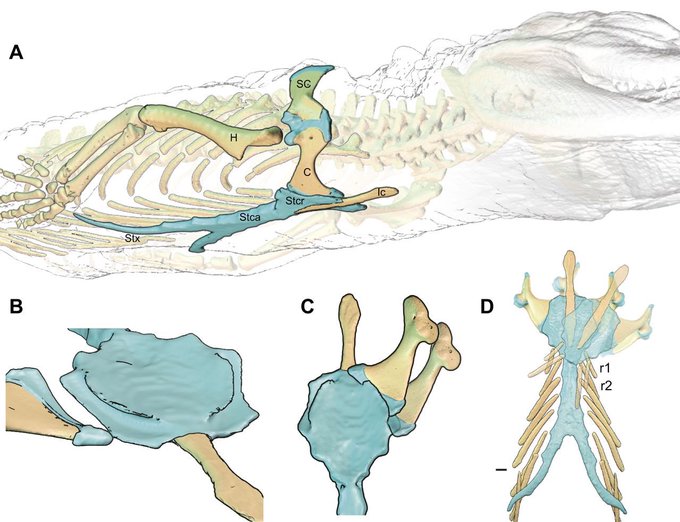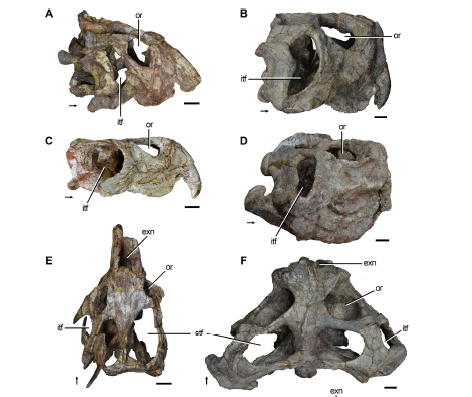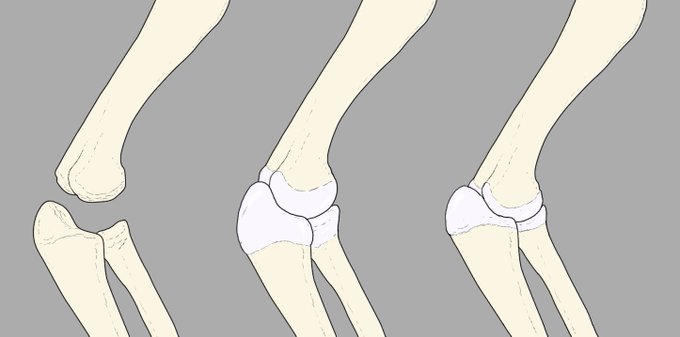archosaursのTwitterイラスト検索結果。 24 件
Q. Does anyone know good papers on trigeminal/mandibular nerves in the dentaries of extinct archosaurs? Thank you!
I feel like the only niche we dont seen replicated fully in Triassic Archosaurs is the fact that other than Shringasaurus which was more of a sauropod analogue than a Ceratopsian analogue. No real ceratopsian convergent form in Triassic archosaurs, but I hope it existed
Triassic Archosaurs are just so unique considering the convergent evolution that would later be taken by their dinosaurian relatives in the later Jurassic and Cretaceous. What catches my eye is just the diversification into familiar yet bizarre forms of life. Their all so unique.
Various archosaurs from the "Dinosauroids" universe, drawn by @simonroyart and colourised by yours truly... See their entire universe at https://t.co/9mNZrS2WvP
@AndresR77498290 @feetlover4567 Herrerasaurus ischigualastensis is one of the most basal taxonomical “dinosaurs,” marking a distinct shift in archosaurs away from crocodilians. It’s feet are notable for being some of the first examples of the “typical theropod” structure, standing on their tip toes. #feet
@MetTiinA @Sketchy_raptor This might be a bit further away than what you are looking for (i.e., Crocodile (L) & Euparkeria (R) ) but the muscles are all labelled and generally the same in all archosaurs. This is from our recent paper in 3d muscle modelling: https://t.co/p1cmshBctl
A few days later than planned, but Ep.14 of #ChasmoPodcast is here! Brösmeli, Struthiosaurus endocast, & Rutland Sea Dragon in the news. We discuss Peter Zallinger's 'Dinosaurs & Other Archosaurs' for VDA, and I interview @GreerStothers!
https://t.co/DlQmKMSaZK
Ornithopods and basal ceratopsians are some of the most underrated archosaurs in the entire family and they deserve more attention. I think one of the ways we can make them more interesting and appealing to the community and public is by introducing feathers/filaments.
Quick concept sketch of Ornithosuchus woodwardi (a croc-line archosaur NOT a dinosaur) in alert pose. People who like classical-looking dinosaurs really have to look at Triassic pseudosuchians (croc-line archosaurs)
@atrocityraptor @digital_duck @KingRexy328 @Carnoferox @MarkWitton In the case of saurischian dinosaurs, many other archosaurs, reptiles & amphibians there are complex and highly variable air-sac systems throughout the body. "Bubble wrapping" refers to the air filled diverticula throughout birds bodies that looks like bubble wrap.
@Syn_JFD There IS precedent for this kind of flexibility as it’s seen in alligators but im not sure about ornithischians or other archosaurs
Get to know @iobopen author @armanafzadeh -
from @BrownUniversity, interested in #vertebrate dynamic #arthrology, & a PhD dissertation focusing on the dynamic arthrology of the hindlimb in #archosaurs.
Read one of Armita's latest involving #XROMM:
https://t.co/bCv5iEKHVW
Interested in the Triassic stem-archosaurs from South America? Check our recently published revision of the group. New information about rhynchosaurs, proterosuchids, proterochampsids, and other Triassic archosaur precursors! #FossilFriday #paleontology
https://t.co/CXtvb0bHng
Brontosuchians, a lineage of Anoliform lizards, achieve sizes rivalling the great archosaurs of Earth's past and present. They are especially common and dominant in coastal environs, feeding on both marine life, such as giant snailfish and bowrider beetles, and the other reptiles
I'm Kathryn and my gym's theme is archosaurs, both extant and extinct, but we'll just call it the Fossil Gym for short https://t.co/eUhid6CmHi
Ramarak and the other Skull Crawlers are fossorial Archosaurs with enormous arms and long blunt claws for digging. Their eyes have almost completely atrophied and a set of whiskers and cornified snout dermis has taken their place.
I created this tree to explain the different hypotheses of the phylogenetic relationships among avemetatarsalian archosaurs, in particular dinosaurs. I explain which ones I follow in my book and point out alternative hypotheses. #paleoart #sciart #dinosaurs
#FossilFriday musings related to my current research. In living archosaurs epiphyseal cartilages can extend limb bone length from between less than 1% to more than 10%! This has big implications for our modelling of joint kinematics and how we interpet plausible ranges of motion.





























































